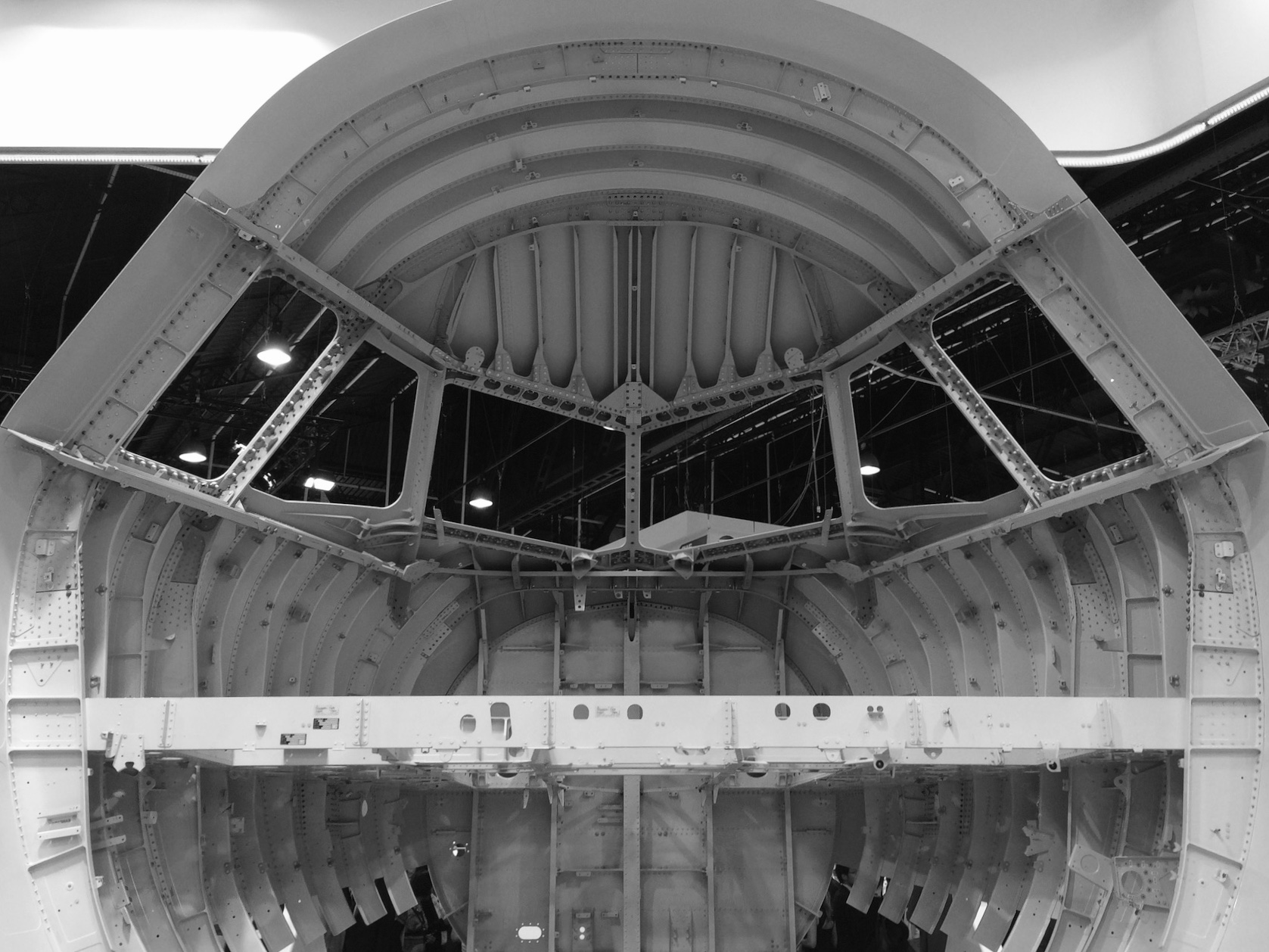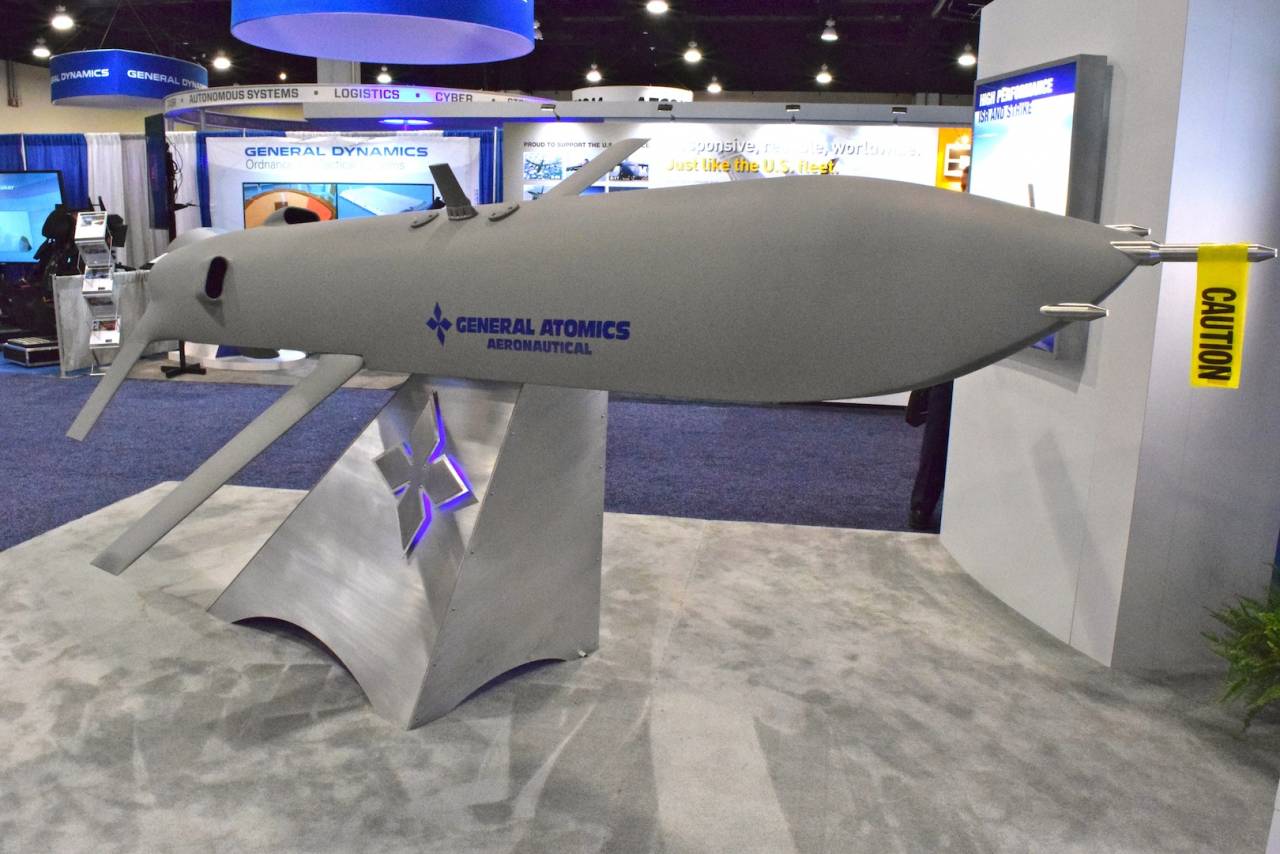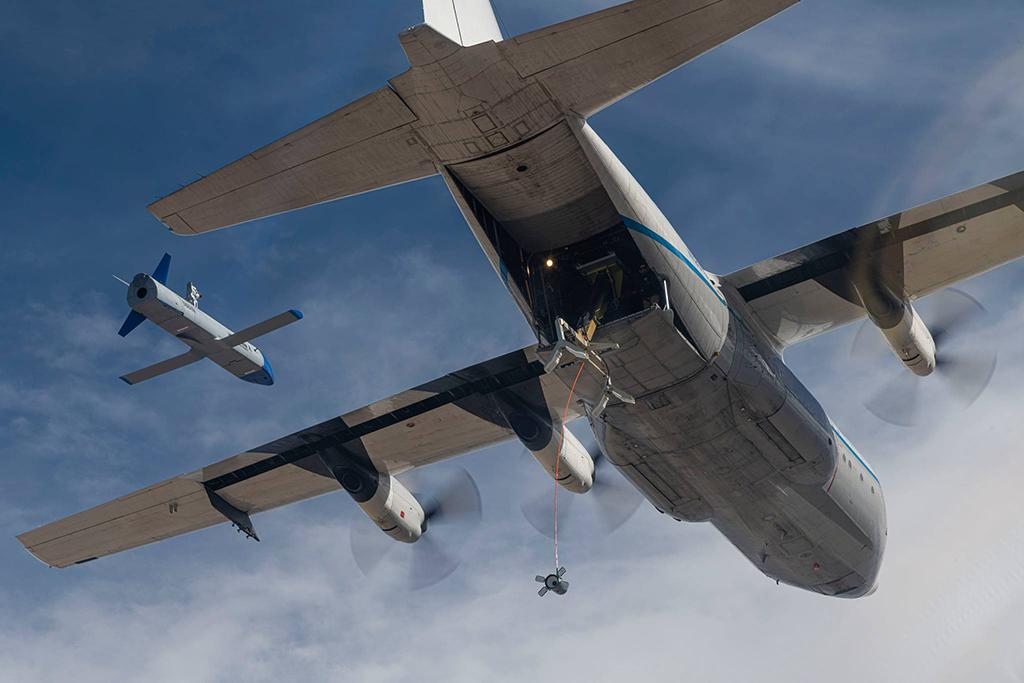X-61a Gremlin Drone - The US Defense Advanced Research Projects Agency (DARPA) first captured an X-61 Gremlins unmanned aerial vehicle (UAV) in October using a mechanical arm and a towing "bullet" deployed from the cargo ramp of a Lockheed Martin C. 130.
The experimental drone's successful recovery follows a series of crashed and failed attempts during three test events since late 2019. DARPA used two Dynetics X-61 drones during recent flight tests, one of which was destroyed by a electrical system failure. he said on November 5.
X-61a Gremlin Drone

Flight tests at Utah's Dugway Proving Ground confirmed all autonomous flight positions and safety features of the X-61 system, DARPA said.
Dynetics' X 61a Gremlins Air Vehicle Completes First Flight
"This recovery was the culmination of years of hard work and demonstrates the possibility of safe and reliable aerial recovery," said Lt. Col. Paul Calhoun, Gremlin program manager in DARPA's Tactical Technologies Office. "Such a capability is likely to be critical to future distributed air operations."
Four flights were conducted in October to gather data on aircraft performance, aerodynamic interactions between the recovery pod and the drone and contact dynamics with the drone during recovery, the agency said.
As part of the final experiment, DARPA received and then repaired the X-61 and conducted a second flight within "24 operational hours". The repaired drone was found on the ground.
Five examples of the X-61 experimental drone were built as part of the Gremlins program. The X-61 was also destroyed when its parachute failed to deploy during its first test flight in 2019.
Paramount Adds Anti Uav Capabilities To Mwari
"Air recovery is complicated," says Calhoun. "We will take some time to enjoy the success of this deployment and then get back to work to further analyze the data and determine the next steps for Gremlins technology."
DARPA is looking at aerial launch and recovery as a way to extend drone reach and reuse drones that would otherwise be difficult to recover.
Also, by forgoing features necessary for takeoff and runway recovery, such as landing gear, these types of aircraft can be lighter in weight and less expensive. The U.S. Air Force called the type "sharp," meaning drones that are cheap enough to be lost in combat attrition and then cheaply replaced.

"Gremlin's expected life of around 20 years could provide significant cost advantages over expendable systems, reducing aircraft load and costs and having lower mission and maintenance costs than conventional platforms designed to operate for decades," DARPA said.
Coming To A Battlefield Near You: Swarms Of Killer Drones
"They can also be launched from various types of military aircraft, keeping protected platforms safely out of range of adversary defenses," DARPA adds.
After the successful restoration demonstration, the research agency says it is considering next steps for the Gremlins program. The X-61 stems from the DARPA Gremlins program to demonstrate a renewable, low-cost drone with digital flight controls and navigation systems. It is designed to be recovered in mid-air by a modified transport aircraft after its mission.
Dynetics was one of four companies awarded a Phase I contract for the program in 2016, and was the winner of the Phase III contract in April 2018.
The X-61A is powered by a Williams F107 turbofan and can carry a variety of payloads, including electro-optical equipment, infrared imaging, electronic warfare systems and weapons.
Darpa Carries Out Tests On Its Flying Aircraft Carriers
The drone is semi-autonomous, allowing a controller either on the mothership or on the ground to control up to eight X-61As simultaneously.
On July 5, 2019, an earthquake near China Lake damaged the X-61A's first test equipment, delaying the program.
The first captive flight of the X-61A on a Lockheed C-130A Hercules was in November 2019.

The first free flight of the X-61A took place on January 17, 2020. The takeoff was successful, but during the recovery the main parachute did not deploy and the aircraft was lost.
C 130 Successfully Snatches Gremlins Drone In Midair
In August 2020, the company announced that they had completed a second test flight, this time successfully recovering the aircraft by parachute. The flight lasted more than two hours and included a makeover and formation flight with the C-130 mother ship.
In October 2021, DARPA announced that a specially equipped C-130 Hercules cargo plane had successfully launched the X-61A. The Defense Advanced Research Projects Agency announced that a number of X-61A Gremlins drones failed to connect in flight. in recent tests with the recovery system on a C-130 Hercules cargo plane, but they came close to success several times. The agency and its partners are already working on another round of capture efforts next year.
Air recovery tests, part of the third phase of the Gremlin program, began at the US Army's Dugway Proving Ground in Utah on October 28, 2020, according to a press release from the Defense Advanced Research Projects Agency (DARPA). The broad goal of the Gremlin effort, which began in 2015, was to demonstrate the ability to cheaply launch and recover a fleet of cruise missile-like drones.
A team led by defense contractor Dynetics, now a wholly owned subsidiary of Leidos, and also including drone maker Kratos, developed the X-61A drone and recovery system, which uses a probe-like concept. and air fuel supply system. You can see how the system is supposed to work in the video below, which includes an earlier flight test video where the drone was attached to the recovery system the entire time.
Darpa Is Exploring Ways To Wirelessly Charge Drone Swarms
DARPA said the three Gremlins drones made a total of nine attempts to connect to the recovery system during recent flight tests. Because they are not designed to land on their own, after running out of fuel, each of the drones deployed a parachute and landed safely on the ground, where the crew could retrieve them for repair and reuse. A failure of that parachute recovery system led to the loss of the Gremlin drone on its first flight last year.
"Each X-61A Gremlins aerial vehicle (GAV) flew for more than two hours, successfully validating the flight positions and safety features of all autonomous formations," DARPA said in a press release. "Hourly data were collected over three flights, including aerodynamic interactions between the docking cartridge and the GAV."
"All of our systems looked good in ground testing, but flight testing is where you really find out how things work," Scott Wierzbanowski, Gremlins program manager for DARPA's Tactical Technology Office, said in a statement. "We were in contact with every effort, but ultimately it was not close enough to engage the recovery system."

A DARPA press release said "the relative motion was more dynamic than expected" between the dock lead and the drones, and that this was at the root of the failed recovery efforts. This was something that we at Warzone had highlighted as an area of potential difficulty for the Gremlin concept in the past, given what was already known how difficult it could be for manned aircraft to use probe fuel and drug. method of charging. At the same time, even then, considerable work was done to stabilize the cargo ships behind the tankers. There have been numerous drone tethering demonstrations linking manned tank refueling and drones using this method.
Rapid Dragon (missile System)
"We've made great strides in learning and responding to technological challenges between each of the test flights to date," said Wierzbanowski, Gremlin's program manager. “We were so close this time that I'm sure there will be some aerial recoveries on the next deployment. However, as with all flight testing, there are always uncertainties and real-world challenges to overcome.”
Another round of flight tests is already scheduled to take place at Dugway in the spring of 2021. DARPA's ongoing goal is to eventually demonstrate the ability to recover four X-61As in the air within 30 minutes.
A successful demonstration of the Gremlin concept could pave the way for exciting new operational opportunities for the US military. Groups of low-cost drones operating autonomously or semi-autonomously, networked together, can perform multiple missions. The drones can carry a variety of payloads, including various types of sensor packages, electronic warfare systems, or even small warheads, giving the whole array added flexibility. Dreams by their very nature present significant challenges to defenders, who can easily become overwhelmed and unable to prioritize their response when faced with a large number of threats approaching simultaneously from multiple vectors.
Image showing the Gremlins drone during a previous flight test where it was attached to the recovery system at all times., Leidos
Darpa Gremlins Test Shows How Us Planes Can Be Drone Mothership
The aircraft's ability to launch and recover any drones that are not destroyed or otherwise expended during a mission for reuse will help keep the cost of deploying these flocks low in the future. It can also reduce the time needed for another attack if the drone can be easily serviced and ready to fly back into the field. You can read much more about the potential benefits
Super sonic the hedgehog pics, pics of super sonic, sonic and friends pics, pics of sonic characters, sonic coloring pics, sonic pics to color, sonic character pics, pics sonic, funny pics of sonic, creepy sonic pics, cool sonic pics, sonic unleashed pics
